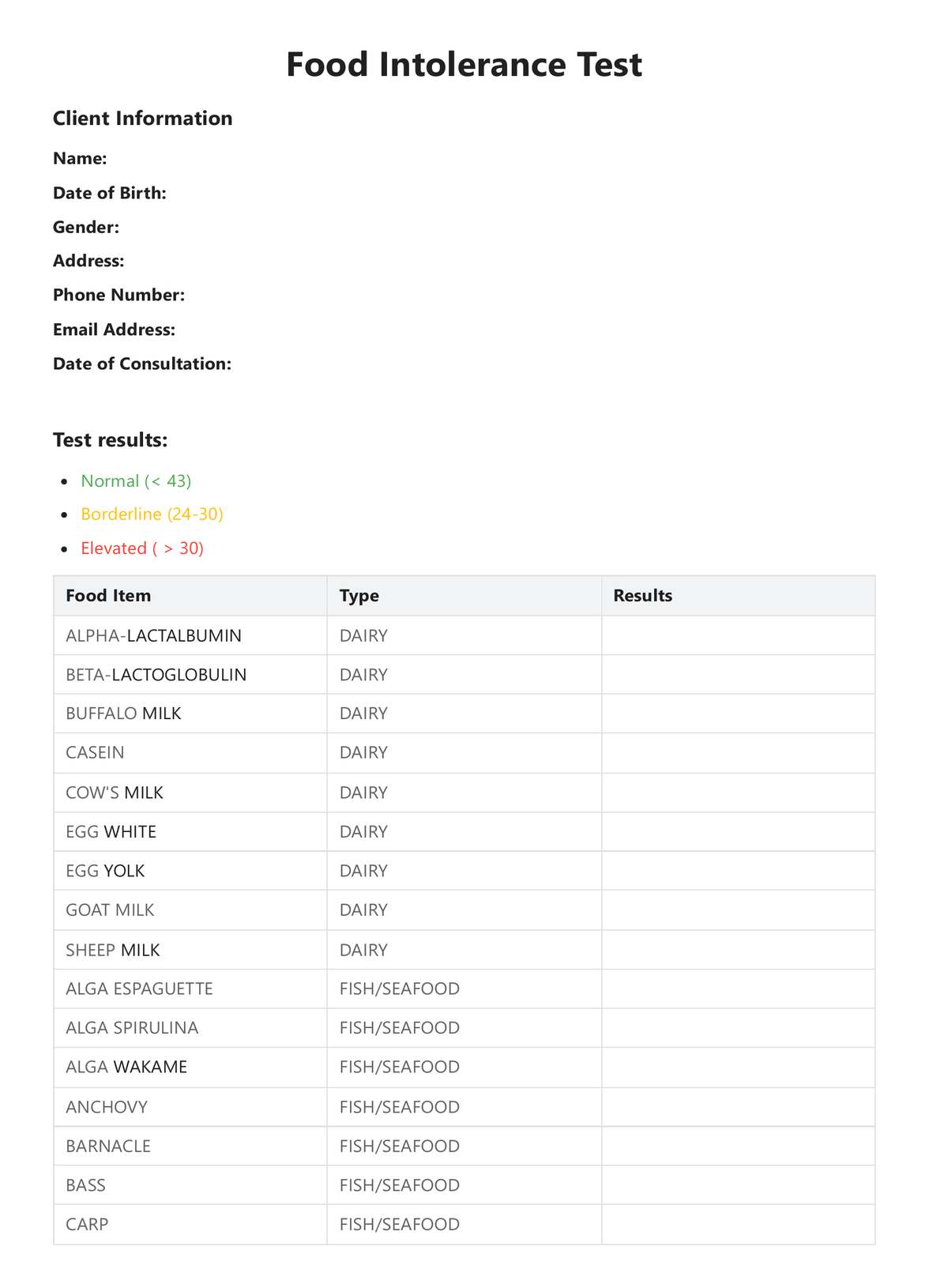As food intolerance tests are not standardized, many companies and organizations offer them, and no single entity can be attributed to developing the food intolerance test.

Food Intolerance Test
Our Food Intolerance Test is an accurate diagnostic tool that uncovers specific food intolerances, guides dietary adjustments, and identifies triggers for adverse reactions.
Use Template
Food Intolerance Test Template
Commonly asked questions
A food intolerance test can be performed by either undergoing a blood test to measure specific antibodies or opting for an elimination diet followed by a controlled reintroduction of suspected trigger foods while monitoring for symptoms.
In order to detect probable food intolerances or sensitivities, a food intolerance test looks for certain antibodies or immunological reactions to particular foods.
EHR and practice management software
Get started for free
*No credit card required
Free
$0/usd
Unlimited clients
Telehealth
1GB of storage
Client portal text
Automated billing and online payments











